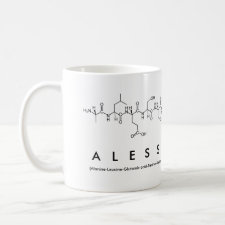
Authors: Lakshmi D, Bossi A, Whitcombe MJ, Chianella I, Fowler SA, Subrahmanyam S, Piletska EV, Piletsky SA
Article Title: Electrochemical Sensor for Catechol and Dopamine Based on a Catalytic Molecularly Imprinted Polymer-Conducting Polymer Hybrid Recognition Element.
Publication date: 2009
Journal: Analytical Chemistry
Volume: 81
Issue: (9)
Page numbers: 3576-3584.
DOI: 10.1021/ac802536p
Abstract: One of the difficulties with using molecularly imprinted polymers (MIPs) and other electrically insulating materials as the recognition element in electrochemical sensors is the lack of a direct path for the conduction of electrons from the active sites to the electrode. We have sought to address this problem through the preparation and characterization of novel hybrid materials combining a catalytic MIP, capable of oxidizing the template, catechol, with an electrically conducting polymer. In this way a network of "molecular wires" assists in the conduction of electrons from the active sites within the MIP to the electrode surface. This was made possible by the design of a new monomer that combines orthogonal polymerizable functionality; comprising an aniline group and a methacrylamide. Conducting films were prepared on the surface of electrodes (Au on glass) by electropolymerization of the aniline moiety. A layer of MIP was photochemically grafted over the polyaniline, via N,N-diethyldithiocarbamic acid benzyl ester (iniferter) activation of the methacrylamide groups. Detection of catechol by the hybrid-MIP sensor was found to be specific, and catechol oxidation was detected by cyclic voltammetry at the optimized operating conditions: potential range -0.6 V to +0.8 V (vs Ag/AgCl), scan rate 50 mV/s, PBS pH 7.4. The calibration curve for catechol was found to be linear to 144 μM, with a limit of detection of 228 nM. Catechol and dopamine were detected by the sensor, whereas analogues and potentially interfering compounds, including phenol, resorcinol, hydroquinone, serotonin, and ascorbic acid, had minimal effect (£~3%) on the detection of either analyte. Non-imprinted hybrid electrodes and bare gold electrodes failed to give any response to catechol at concentrations below 0.5 mM. Finally, the catalytic properties of the sensor were characterized by chronoamperometry and were found to be consistent with Michaelis-Menten kinetics
Template and target information: catechol, dopamine



Join the Society for Molecular Imprinting

New items RSS feed
Sign-up for e-mail updates:
Choose between receiving an occasional newsletter or more frequent e-mail alerts.
Click here to go to the sign-up page.
Is your name elemental or peptidic? Enter your name and find out by clicking either of the buttons below!
Other products you may like:
 MIPdatabase
MIPdatabase









